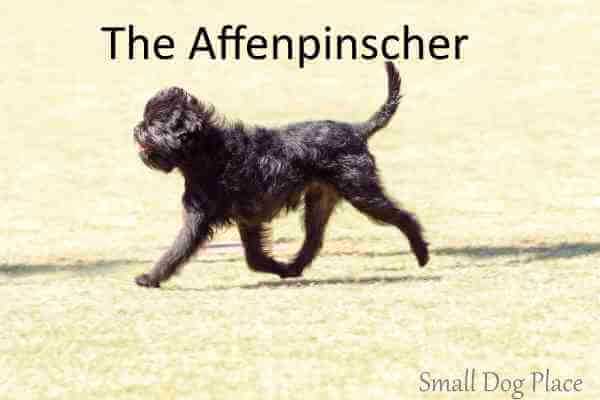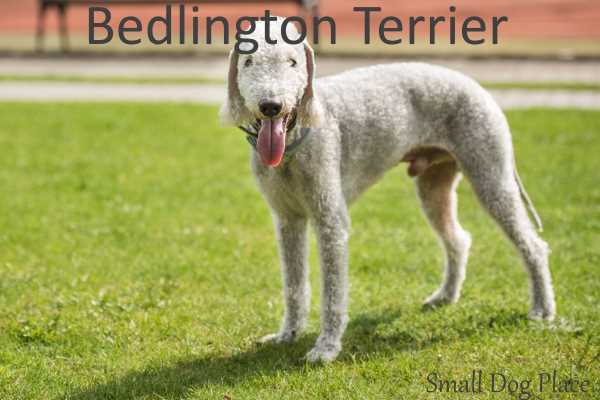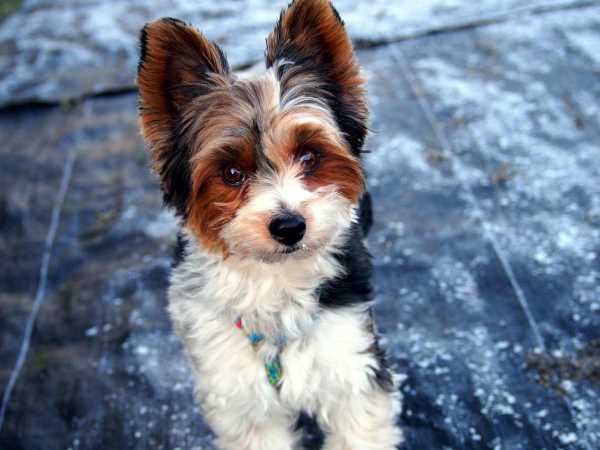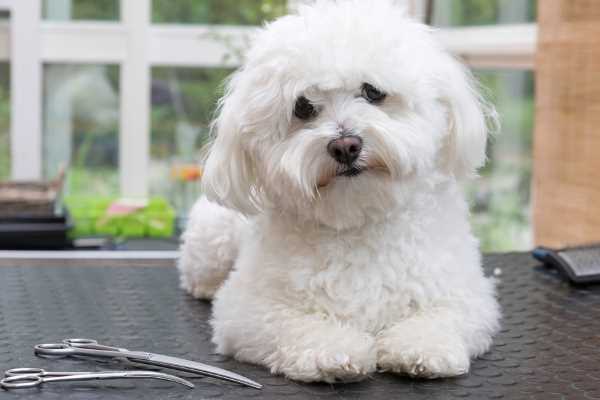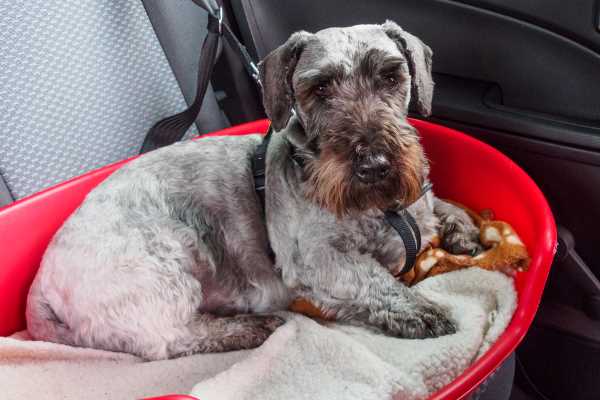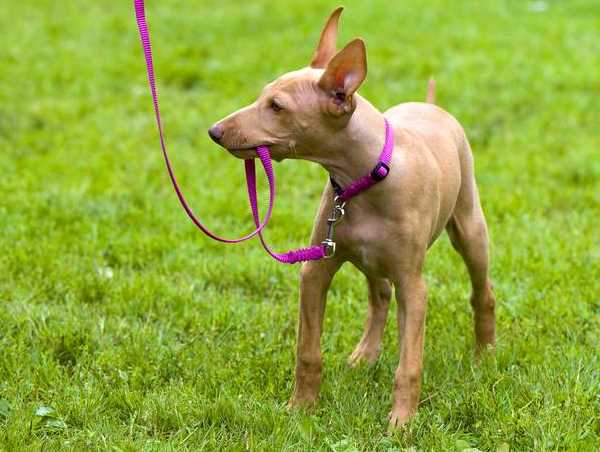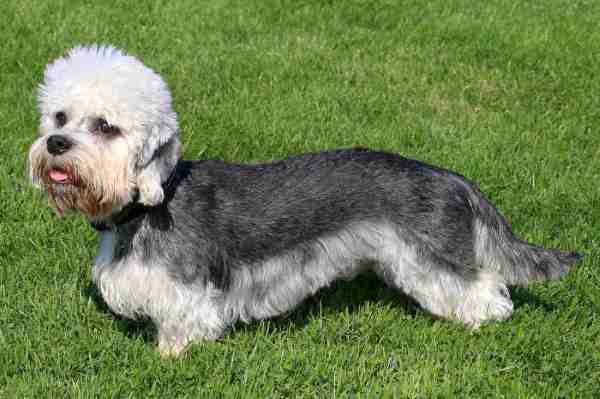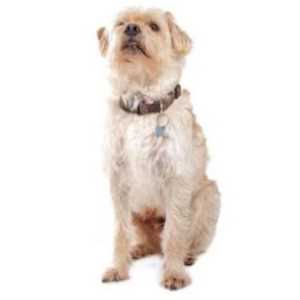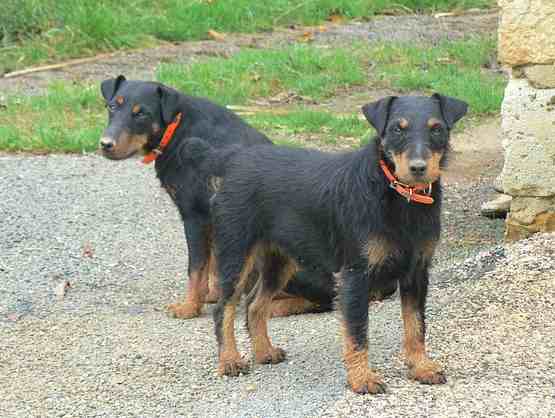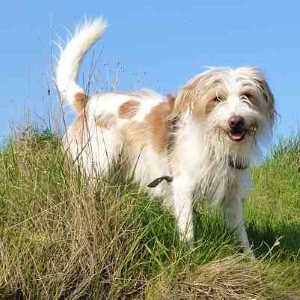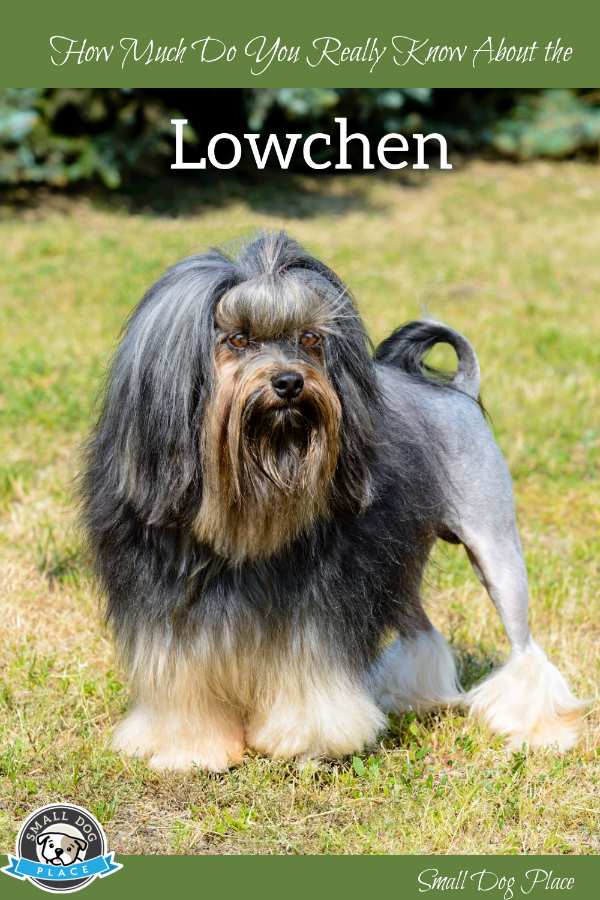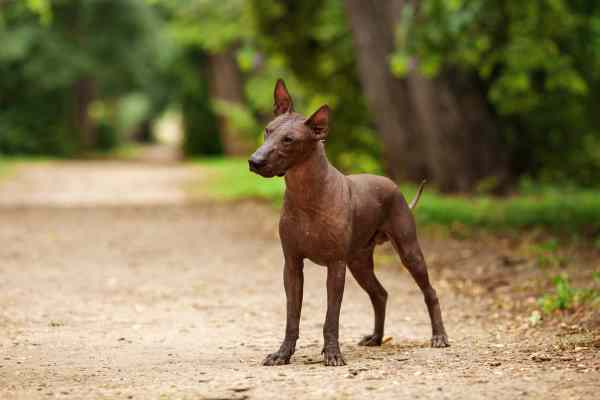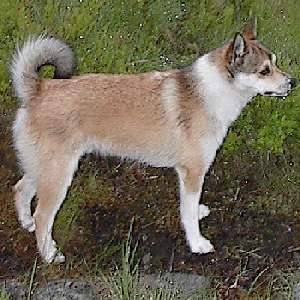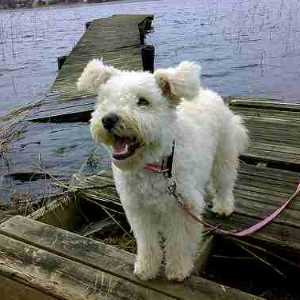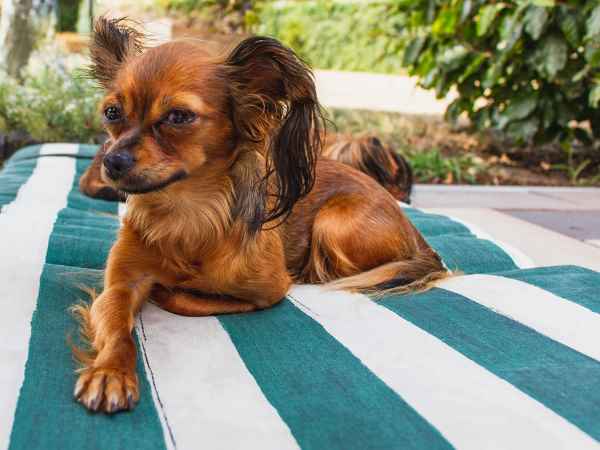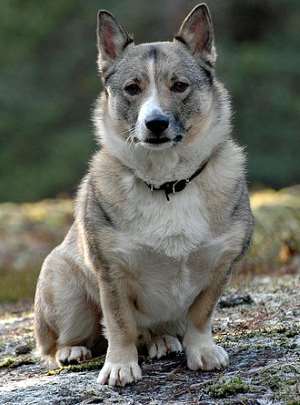- Small Dog Place Home
- Rare Dog Breeds
20 Rare Dog Breeds
The Smallest, Cutest Dogs to Check Out
By Janice A. Jones |Last Updated 02-07-2024
Have you ever thought that rare dog breeds would be out of the question when you are searching for a new canine to love and cherish?
It's true; rare often means hard to find, which normally translates into a long wait for that new puppy. It also could be expensive. But not all rare dog breeds are costly; sometimes, you get lucky.
For most of these breeds, the average person may never see one. Professionals such as veterinarians, vet techs and assistants, dog-sitters, walkers, and trainers often encounter these dogs.
For dog lovers involved with dogs, sightings of these dog breeds may be few and far between. If you are lucky enough to know and love one of these dogs, I hope you will take the time to tell your story below.
Why are these Rare Breed Dogs, well, so rare?
The rarity of these dog breeds can be attributed to several factors:
1. Geographic Isolation: Many breeds originated in specific regions and were not widely dispersed. Some breeds, like the Peruvian Inca Orchid or the Norwegian Lundehunds, were developed in relatively isolated areas, limiting their spread.
2. Breed Standards and Preservation Efforts: Some breeds remain rare because kennel clubs and breed enthusiasts strive to maintain specific breed standards and prevent overbreeding. This can limit the number of dogs available.
3. Size of the Breed Population: Some breeds, like the Danish-Swedish Farmdogs, faced near extinction at certain points in history. Breeding programs to restore these populations can take many years; some are still in recovery.
4. Specific Breeding Programs: Some dogs, like the Russian Toy or the Biewer Terrier, were developed relatively recently and breeding programs have been localized and limited in scale.
5. Regulations and Import/Export Restrictions: Some breeds might be prevalent in their country of origin but are rarely found elsewhere due to strict regulations surrounding the import and export of live animals.
6. Breed Suitability and Demand: Certain breeds might not be suitable for many common pet owners due to unique care requirements or temperaments. For example, the Mexican Hairless (Xoloitzcuintli) requires additional care for its skin, and the Jagdterrier was explicitly bred for hunting purposes.
7. Health Issues: Some dog breeds are prone to serious health issues, which can lessen their popularity and thereby impact their prevalence.
I've put together a list of small dog breeds that are rare around the world. Some can only be found in their native country. Sometimes there aren't enough breeders causing a supply shortage. Many times, though, they are a new breed, recently introduced or accepted for registration.
While some of these breeds may be rare in some parts of the world and common in others, most will agree that they aren't the easiest dogs to find. This list only includes those rare breed dogs that are small, under 25 pounds.
Where do you find these rare breed dogs?
Sometimes, you’ll likely encounter these dogs only at a dog show. If one of these breeds catches your fancy, please read the breed profile and research all the links I’ve provided about each breed.
I've compiled a list of small dog breeds that are rare worldwide. Some can only be found in their native country. Sometimes, there aren't enough breeders, causing a supply shortage. Many times, though, they are a new breed, recently introduced or accepted for registration.
While some breeds may be rare in some parts of the world and shared in others, most will agree that they aren't the easiest dogs to find. This list only includes those rare breed dogs that are small, under 25 pounds.
So, just who are these rare dog breeds?
20 Rare Dog Breeds
Here is our list of 20 rare dog breeds. Click on the the breed to be taken to that particular breed or scroll down to see them all.
- Affenpinscher
- Bedlington Terriers
- Biewer Terrier
- Bolognese
- Cesky Terrier
- Cirneco dell’Etna
- Dandie Dinmont Terrier
- Danish-Swedish Farmdog
- Dutch Smoushond
- Jagdterrier
- Kromfohrlander
- Lowchen
- Mexican Hairless
- Norwegian Lundehunds
- Peruvian Inca Orchid
- Pumi
- Russian Toy
- Russian Tsvetnaya Bolonka
- Vallhund
- Teddy Roosevelt Terrier
The 20 Rare Dog Breeds Under 25 Pounds
These rare dog breeds are listed in alphabetical order:
1. Rare Dog Breeds: The Affenpinscher
The Affenpinscher is a bold, alert, loving, and very loyal breed. Additional words that describe his personality include Fun-loving, Spunky, Curious, Adventurous, Stubborn, Playful, and Active.
He is curious and intelligent and generally quiet unless he hears a noise, and
then you’ll hear a different side to him. He is a companion dog and must live
indoors near his favorite people.
He is the quintessential small dog with a big attitude. He has no sense of
size, so you must protect him from himself.
Rare Dog Breed: Affenpincher: Facts
- Lifespan: 12-14 years
- Health Issues: Hip Dysplasia, Heart Murmurs, Legg-Calve-Perthes Disease
- Climate Tolerance: Adaptable but sensitive to extreme temperatures
- Dietary Requirements: Small breed dog food, prone to obesity
- Country of Origin: Germany
- Affenpinscher Club of America: http://affenpinscher.org/
Read the complete Affenpinchr breed profile on Small Dog Place
2. Rare Dog Breeds: The Bedlington Terriers
These dogs are loving, sensitive, mild-mannered, and intelligent. People who own these dogs say they are curious, affectionate, and faithful extroverts.
They love people, both adults and children, thriving on attention from their favorite humans.
They are fast and agile and may take off unexpectedly to chase a squirrel or other fascinating rodent. If outdoors, they should remain on a leash or within the confines of a fenced area.
Rare Breed Dog: Bedlington Terrier
- Lifespan: 14-16 years
- Health Issues: Copper Toxicosis, Hip Dysplasia, Retinal Dysplasia
- Climate Tolerance: Adaptable to various climates
- Dietary Requirements: Small to medium breed dog food
- Country of Origin: United Kingdom
- The Bedlington Terrier Club of America: http://www.bedlingtonamerica.com/
Read the complete Bedlington Terrier Breed Profile on Small Dog Place.
3. Rare Dog Breeds: The Biewer Terrier
Pronounced “Bee-Vair,” the breed was first discovered and developed in Germany by a couple, Werner and Gertrude Biewer, Yorkshire terrier breeders. The original name for this new breed was the German Yorkshire Terrier.
They mated two of their dogs together in 1984 and produced a blue, gold, and white dog named Schneeflocken von Friedheck. The explanation for this unusual “Yorkie” was a rare recessive piebald gene mutation.
From there, it was introduced into the United States in 2003 and continues to gain in popularity as people learn about this adorable, happy, even-tempered terrier that is a fiercely loyal companion to all those humans he determines are his family.
Rare Breed Dog: Biewer Terrier
- Lifespan: 14-16 years
- Health Issues: Copper Toxicosis, Hip Dysplasia, Retinal Dysplasia
- Climate Tolerance: Adaptable to various climates
- Dietary Requirements: Small to medium breed dog food
- Country of Origin: Germany
- The Biewer Terrier Club of America, Inc.
4. The Rare Dog Breeds: The Bolognese
The Bolognese, pronounced "bowl-oh-knees," is pure white with a thick cottony coat which requires some daily grooming. They have a somewhat square body, with their length equal to their height.
These dogs seem to have the personality that might just be perfect: calm, playful and devoted to their owners.
But, they are still a very rare breed, and as such are difficult to find and somewhat expensive. What makes people so enamored by them?
The Bolo as they are affectionately called by fanciers is a playful, easy going breed who is totally devoted to his people and willing to please.
Rare Breed Dog: Bolognese: Facts
- Lifespan: 12-14 years
- Health Issues: Eye problems, Hip Dysplasia
- Climate Tolerance: Better in moderate climates
- Dietary Requirements: Small breed dog food, need regular meals.
- Country of Origin: Italy
- Bolognese Club of America: http://www.bologneseclubofamerica.org/
5. Rare Dog Breeds: The Cesky Terrier
Cesky is pronounced “chess-key” after it's native country, the Czech Republic, where it is the National Dog.
Somewhat reserved by nature, these dogs are loyal and protective of family members.
Clever, adventurous, they make a great family pet. They are active and terrier through and through. This means that they love to dig and chase. They make excellent watch dogs but are not considered to be overall vocal.
The downside to this breed is its lack of availability. They are very rare and if you think this is the breed for you, you may be in for a wait.
According to the AKC, there are only 600 Cesky Terriers in the U.S.A. as of 2015. He now ranks 182 of 193 with the American Kennel Club making him a very rare breed.
Rare Breed: Cesky Terrier: Facts
- Lifespan: 12-15 years
- Health Issues: Hip Dysplasia, Scottie Cramp
- Climate Tolerance: Adaptable, can tolerate colder weather
- Dietary Requirements: High-quality diet to maintain weight
- Country of Origin: Czech Republic
- American Cesky Terrier Fanciers Association: http://ceskyterrierfanciers.com/
6. Rare Dog Breeds: The Cirneco dell’Etna
Pronounced, "cheer-NEK-o" these are one of the few breeds that have survived from antiquity almost unchanged into the 21st century.
True to the nature of a sighthound, this breed hunts with sight and speed and can get away from you easily if something catches their eye.
For this reason, they should not be trusted off leash and do much better in securely fenced areas. These dogs are also great at jumping and digging, so a tall fence is a must.
Due to their short hair and background of living in hot dry climates, these dogs undoubtedly do much better in the heat than in the cold. A coat or sweater is necessary in cold climates and watch for frostbite to paws on extremely cold days. He ranks 183 out of 193 dog breeds with the American Kennel Club
The Cirneco dell’Etna: Facts
- Lifespan: 12-14 years
- Health Issues: Generally healthy, occasional hip dysplasia
- Climate Tolerance: Well, adapted to hot climates
- Dietary Requirements: Moderate protein and fat content food
- Country of Origin: Italy
- Cirneco dell'Etna Club of America: http://www.cirneco.com/
7. Rare Dog Breeds: The Dandie Dinmont Terrier
Known for their devotion to their families, the unique Dandie Dinmont Terrier is proof that good things come in small packages. Dandies are small and adorable with a personality to match. They are independent and intelligent and do great with kids and families.
The Dandie Dinmont is an extremely rare breed of dog. The breed ranks 167 out of 193 dog breeds registered with the American Kennel Club
This breed is also on the list of vulnerable or at risk breeds with The Kennel Club in the UK.
Dandie Dinmont: Facts
- Lifespan: 12-15 years
- Health Issues: Hypothyroidism, Glaucoma, Epilepsy
- Climate Tolerance: Better in cooler climates
- Dietary Requirements: Small to medium breed dog food
- Country of Origin: Scotland
- Dandie Dinmont Terrier Club of America: http://www.ddtca.org/
8. Rare Dog Breeds: The Danish-Swedish Farmdog
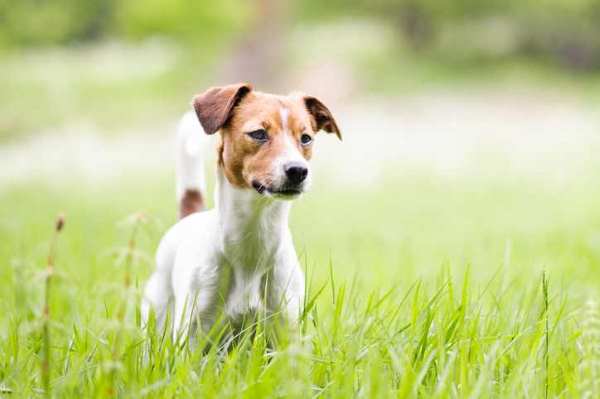 Danish-Swedish Farmdog
Danish-Swedish FarmdogStanding just over 14 inches and weighing about 15 to 20 pounds, these are some of the smaller farm dogs in the world. The AKC has accepted them into the Foundation Stock Service and assigned them into the working dog category. They are are allowed to participate in a variety of dog sports.
Originally serving as an all round farm dog whose duties included ridding the farm of vermin, herding livestock watchdog and hunting dog.
They also served as the family companion. With the demise of the family farm, they became rarer until they were in danger of disappearing altogether. but it wasn't until 1987 that these dogs were recognized in their native countries of Sweden and Denmark.
They are intelligent, active and an easy dog to train and because of this can excel in a number of canine sports.
Danish-Swedish Farmdog: Facts
- Lifespan: 11-15 years
- Health Issues: Generally healthy with few breed-specific ailments
- Climate Tolerance: Adaptable to various climates
- Dietary Requirements: Depending on activity level, generally moderate proteins and fats
- Danish-Swedish Farmdog Club of America: http://www.farmdogs.org/
9. Dutch Smoushond
If the ultimate shaggy dog is what you want, then the Dutch Smoushond is just right for you.
Originally bred in the 1800s to rid stables of mice and rats, the Dutch Ratter or Hollandse Smoushond as it is also called is a companion dog today.
Very loyal and bonded to their family, these dogs are less outwardly friendly to strangers. They make excellent watch dogs because they are very alert, tend to bark, and wary of anyone they do not know.
Considered to be related to the Schnauzer, they are exceedingly rare outside of their home country of The Netherlands.
So unless you are a Dutch citizen, you might have a very difficult time finding one of these charming dogs for yourself.
Dutch Smoushond: Facts
- Lifespan: 12-15 years
- Health Issues: Not many breed-specific issues; regular checks needed
- Climate Tolerance: Adaptable to various climates
- Dietary Requirements: High-quality small-breed dog food
10. Rare Dog Breeds: The Jagdterrier
The German Hunting Terrier are not the first thing that comes to mind if you’re looking for a companion or lapdog but they are gaining in popularity even among non-hunters. Through and through, these dogs were developed to be all-around hunting dogs, but they can make an excellent, affectionate pet as well.
Many names, one dog breed, you will see this breed also referred to as the German Hunt Terrier, German Hunting Terrier, or Deutscher Jagdterrier.
Though these dogs remain in FSS status in the American Kennel Club, they are accepted with FCI (Fédération Cynologique Internationale), ANKC (Australian National Kennel Council), NZKC (New Zealand Kennel Club) and the UKC (United Kennel Club)
German Hunting Terrier: Jagdterrier: Facts
- Lifespan: 10-12 years
- Health Issues: Hip and elbow dysplasia, eye conditions
- Climate Tolerance: Can tolerate cold climates
- Dietary Requirements: High protein diet due to active nature
- Jagdterrier Club of America: http://www.jagdterrierclubofamerica.org/
11. Rare Dog Breeds: The Kromfohrländer
The Kromfohrlander (Proununced Krome-fore-lahn-dair) is a very rare breed, especially in the United States.
In Europe, where they were first developed they are equally rare. The Kromfohrlander or “Kromis” as they are often nicknamed, is a loyal, people oriented breed who craves the attention of their special people.
They are adaptable, docile but high-spirited. Friendly with people they know, they can be reserved with strangers.
Still very rare, these dogs can be imported but expect to pay a high fee that will also include transportation.
The Kromfohrlander: Facts
- Lifespan: 13-15 years
- Health Issues: Hyperkeratosis, Patellar Luxation
- Climate Tolerance: Better in moderate climates
- Dietary Requirements: High-quality dog diet according to the age
12. Rare Dog Breeds: The Löwchen
The Lowchen or “little lion” gets its name from the distinct show trim that resembles a lion. You will recognize immediately the look of the lion in this dog when trimmed.
The coat hair is left natural and untrimmed on the forequarters and clipped close to the skin on the hindquarters with little cuffs of hair around the ankles and a small plume on the tail.
Does clipping a dog in this way make it seem bigger than life? Well some Löwchen, even though they are a small breed, think they are much bigger.
The Lowchen ranks 171 out of 193 registered breeds of the American Kennel Club, making them a very rare breed in the United States, even though they have been in this country since 1971.
The Löwchen: Facts
- Lifespan: 13-15 years
- Health Issues: Patellar Luxation, Eye problems
- Climate Tolerance: Adaptable to various climates
- Dietary Requirements: Suitable for a diet formulated for small, active dogs
- The Lowchen Club of America: http://www.lowchen.org/
13. Mexican Hairless
The Xoloitzcuintli, or Mexican Hairless Dog, is a very rare breed of dog that is actually considered a national treasure in Mexico. These are unique dogs, with a unique name.
Even experts have trouble pronouncing the name of this dog. The way to pronounce their name is (show-low-its-queen-tli), but it is easiest to call them Mexican Hairless or simple “Xolo”, which is pronounced (show-low).
If you’re in the market for a rare treasure that is loyal, alert, and athletic, then you are reading the right article. The Xolo comes in a few different sizes, much like a poodle. Standard, miniature, and toy, but for the sake of this article and website, we are going to be focusing on the toy Xoloitzcuintli.
These unique dogs have a hairless body that actually radiates heat more intensely than a coated dog does. Ancient people used to use them as heating pads to help ease the aches and pains that they might be having.
Mexican Hairless Facts
- Lifespan: 13-18 years
- Health Issues: Dental problems due to missing teeth, skin problems
- Climate Tolerance: Better in warmer climates
- Dietary Requirements: Balanced diet, skin sensitive to additives, requires extra care for skin
- Xoloitzcuintli Club of America: http://xoloitzcuintliclubofamerica.org/
14. Rare Dog Breeds: The Norwegian Lundehunds
The Norwegian Lundehund is famous for being an ancient breed. Research suggests that these dogs have been living around and in cooperation with humans for thousands of years, perhaps before the Ice Age.
Residing in the colder, harsher conditions of Norway led to this dog’s ability to handle the cold well. In ancient times these dogs were known for hunting puffins and other small birds, as well as fish. This "Puffin Dog" is well known for its unique paw anatomy: They have six toes on each foot!
Even though they are an ancient breed, their numbers began to dwindle when new methods for catching puffins were developed. They're beginning to make a comeback, but still remain extremely rare.
Norwegian Lundehund: Facts
- Lifespan: 12-14 years
- Health Issues: Lundehund syndrome is a common issue
- Climate Tolerance: Better in colder climates
- Dietary Requirements: Natural diet containing fermented fish and seal balanced with high-quality dry dog food
- Norwegian Lundehund Association of America: http://www.lundehund.com/
15. Peruvian Inca Orchid
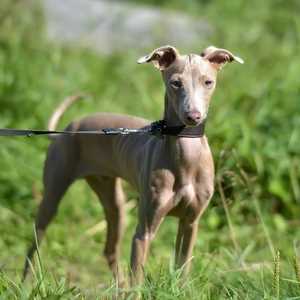 Peruvian Inca Orchid
Peruvian Inca OrchidThese dogs are exceedingly rare even in Peru and actually come in 3 sizes and 2 varieties. Both hairless and dogs with hair exist and comes in three sizes, small, medium and large. The smallest of the breed is about 8 pounds and about 10 inches in height.
Originally existing as a living breathing hot water bottle, these dogs could snuggle up and keep humans (and themselves) warm. But these expert snugglers are also good sight hounds, alert, agile and ready to hunt.
They are recognized by the American Kennel Club in it's FCI foundation stock but as of this writing are not participating in any canine sports or conformation shows.
Like other hairless dog breeds, they are sensitive to the sun and would require a sunblock to protect their skin. They don't do well in cold climates and require the same type of clothing that people wear in cold temperatures.
Peruvian Inca Orchid: Facts
- Lifespan: 12-14 years
- Health Issues: IBD, Seizures, Skin lesions
- Climate Tolerance: Better in warmer climates
- Dietary Requirements: High-quality dog food, additional skin care needed
16. Rare Dog Breeds: The Pumi
The Pumi is an affectionate, playful, medium sized dog that is also fairly low maintenance. They’re well known for their terrier like behavior, which is appropriate given their history as herding dogs.
The mischievous and bouncing personalities of the Pumi are sure to give an owner plenty of laughs and memorable moments, with each being a unique addition to the family.
The breed has a long history in Hungary as a herding dog, but like so many breeds that existed prior to World War II, their numbers dwindled. Now they are making a come-back and was recognized with the American Kennel Club in 2016 as their 190th breed.
Pumi: Facts
- Lifespan: 12-13 years
- Health Issues: Hip Dysplasia, Deafness
- Climate Tolerance: Adaptable to various climates
- Dietary Requirements: Diet needs to be enriched with proteins
- Hungarian Pumi Club of America: http://www.pumiclub.org/
17. Russian Toy
If you are looking for a tiny dog with a lot of character, Russian toy terriers are the perfect dog breed for you. The Russian toy terrier, which is also known as the Russkiy Toy Terrier is one of the smallest dog breeds in the world.
However, this is not a dog that is aware of its small size – it is active and bold. It is always ready to protect and defend its owner and act like a guard dog.
The Russian terrier is a family dog. It gets very attached to its owner and family and is extremely loyal. This is a dog that gets along with everybody and becomes an important member of the family.
It wasn't until the 1990s that the breed was introduced to the U.S. Prior that that, the breed was nearly wiped out twice in Russia. The first problems arose in the 1920s with the rise of Communism and the again in the 1990s with the influx of foreign breeds.
Russkiy Toy or Russian Toy Terrier: Facts
- Lifespan: 10-12 years
- Health Issues: Patellar Luxation, Dental problems
- Climate Tolerance: Better in warmer climates
- Dietary Requirements: Small breed diets enriched with proteins
- Russian Toy Club of America: http://www.russiantoyclub.org/
18. Rare Dog Breeds: The Russian Tsvetnaya Bolonka
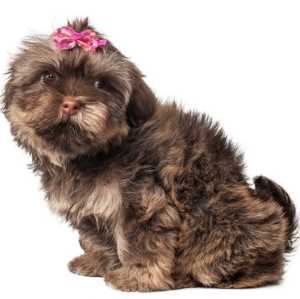 Russian Tsvetnaya Bolonka
Russian Tsvetnaya BolonkaThe Russian Tsvetnaya Bolonka's history may explain much about why this cute little dog still remains so rare outside of Russia. Though likely dating back to the 18th century, they suffered like other small breed dogs during the Soviet Era.
The harsh environment along with the need for working dogs, made small breeds unnecessary so few if any were bred. After Khrushchev came into power the demand for small dogs grew but no breds were imported into Russia so new breeds were developed with what dogs were already in existence, mainly Lhasa Apso, Poodles, Shih Tzu, Bolognese and Pekingese. Local fluffy mongrels were also thrown into the mix.
With the fall of the Iron Curtain, others outside of Russia became interested in the breed. Prior to 2002, very few of these dogs were found in the U.S.
By 1997 the standard was confirmed by the Russian Kennel Federation
As of this writing, the breed has been assigned to the AKC Foundation Stock Services (FSS) and listed under the toy group.
Russian Tsvetnaya Bolonka: Facts
- Lifespan: 14-16 years
- Health Issues: Generally healthy breed
- Climate Tolerance: Better in cooler temperatures
- Dietary Requirements: Small breed dog food, avoid overfeeding
- American Bolonka Club: https://www.americanbolonkaclub.com/
19. Swedish Vallhund
The Swedish Vallhund is a great family dog that is lively, self-confident and loyal. If you think a courageous, enthusiastic friend who can also double as a great work dog is for you, start looking early.
If you are in the U.S., this is a very rare breed and very hard to find. What makes these dogs so amazing?
Well, for starters, they are friendly, eager to please, healthy and hardy. Coming from a line of Spitz or northern type dogs, they do great in cooler climates but may also be fine in hot weather with some precautions.
The first Swedish Vallhunds came to America in 1985 were not recognized until 1996 by the United Kennel Club. The American Kennel Club first recognized the breed in 2007 making it the 156th breed.
By the end of 2015, they ranked 163 of 193 in popularity with the AKC. The Swedish Vallhund is now recognized and can be found in many countries.
Swedish Valhund: Facts
- Lifespan: 12-14 years
- Health Issues: Hip Dysplasia, Eye Diseases
- Climate Tolerance: Adaptable to various climates
- Dietary Requirements: Check weight regularly and feed a balanced diet
- Swedish Vallhund Club of America: http://www.swedishvallhund.com/
20. Rare Dog Breeds: The Teddy Roosevelt Terrier
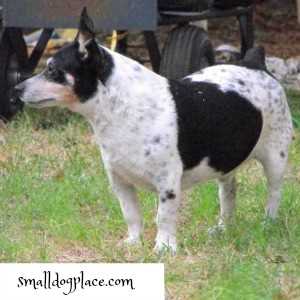 Teddy Roosevelt Terrier
Teddy Roosevelt TerrierThe American Teddy Roosevelt Terrier was developed from a variety of small and medium breeds that came with early immigrants to the U.S. Most of the breeds that were used were terriers and hunting dogs used to clear the home and farm of vermin.
It is likely that early breeders used the Smooth fox terrier, the Manchester Terrier, Beagle, Whippet, Italian Greyhound and the White English Terrier which is now extinct.
Originally, the Teddy Roosevelt was a variety of the Rat Terrier but it wasn't until the 1990s, that breeders choose to divide the two breeds. At the time, there were two varieties, the short legged terrier and the longer legged terrier. The shorter legged terriers became the Teddy Roosevelt Terrier.
The breed was recorded by the AKC into the Foundation Stock Services in 2016 and assigned the Terrier Group.
Teddy Roosevelt Terrier: Facts
- Lifespan: 14-16 years
- Health Issues: Heart problems, Hip Dysplasia
- Climate Tolerance: Adaptable to various climates
- Dietary Requirements: High-quality protein diet, prone to obesity
About Janice (author and voice behind this site)
Janice Jones has lived with dogs and cats for most of her life and worked as a veterinary technician for over a decade. She has also been a small-breed dog breeder and rescue advocate and holds academic training in psychology, biology, nursing, and mental health counseling. Her work focuses on helping dog owners make informed, responsible decisions rooted in experience, education, and compassion.
When not writing, reading, or researching dog-related topics, she likes to spend time with her six Shih Tzu dogs, her husband, and her family, as well as knitting and crocheting. She is also the voice behind Miracle Shih Tzu and Smart-Knit-Crocheting
Does This Article Deserve Your Thumbs Up?
We always appreciate your support and encouragement. Your thumbs up means so much to us. Please like this article.
If you find this page or any page on Small Dog Place Helpful, or useful in anyway, I'd love it if you would click the small heart found on the bottom right of each page.
You can also share or bookmark this page -- just click on the:

Free Monthly Newsletter
Sign Up for Our Free Newsletter and get our Free Gift to You.
my E-book, The Top 10 Mistakes People Make When Choosing a Dog (and how to avoid them)
